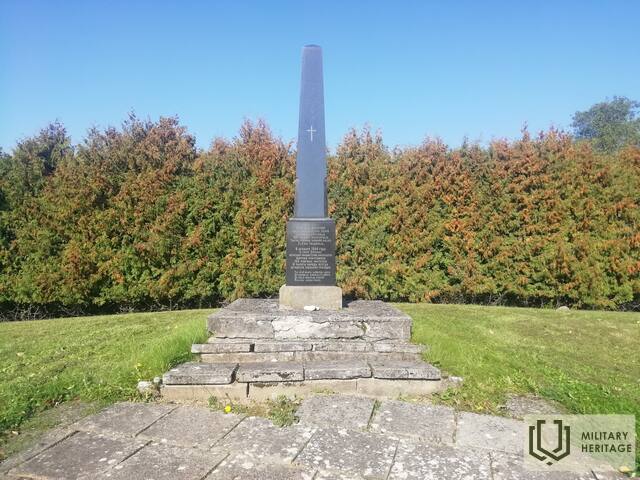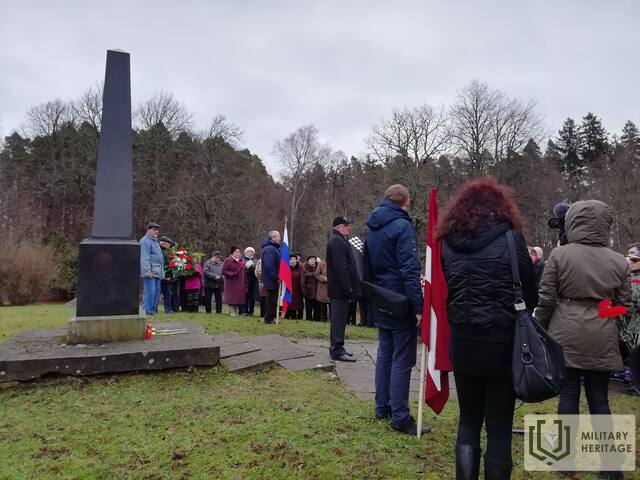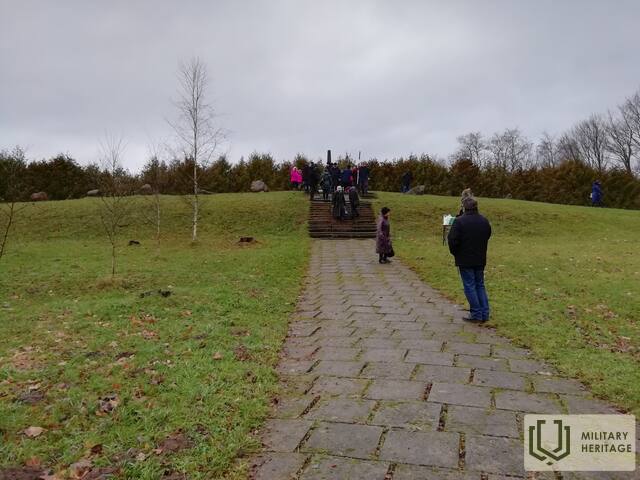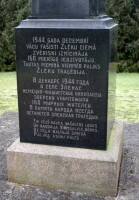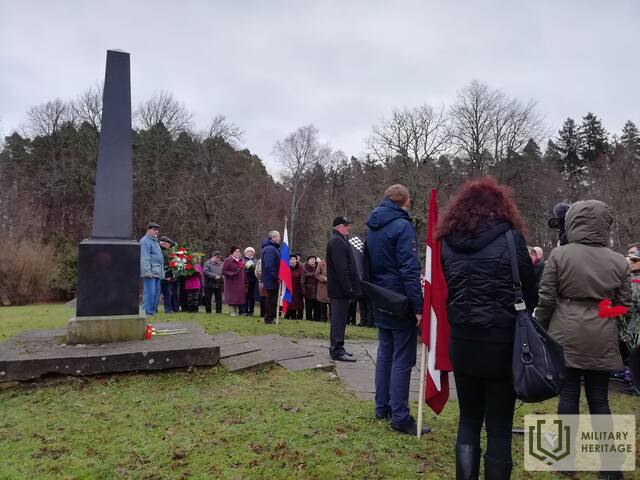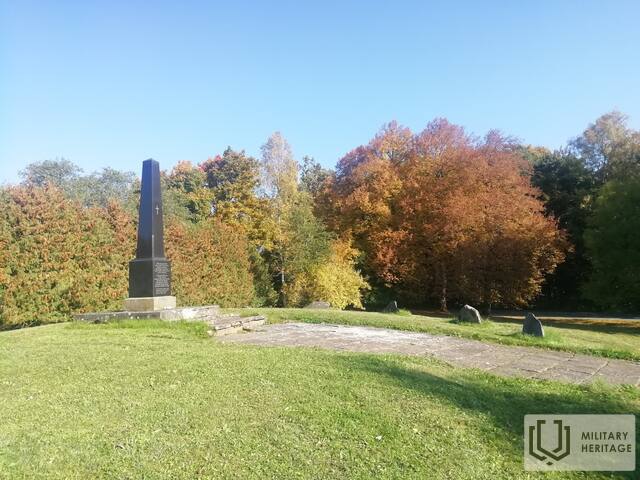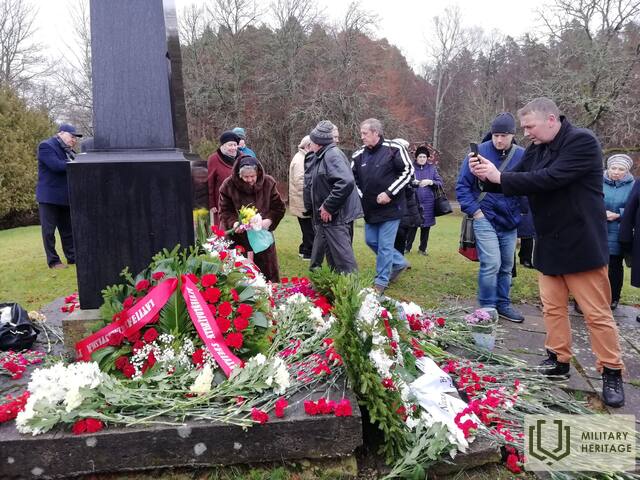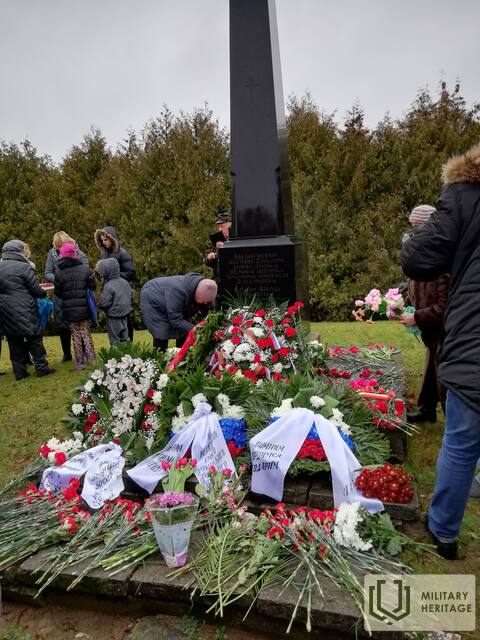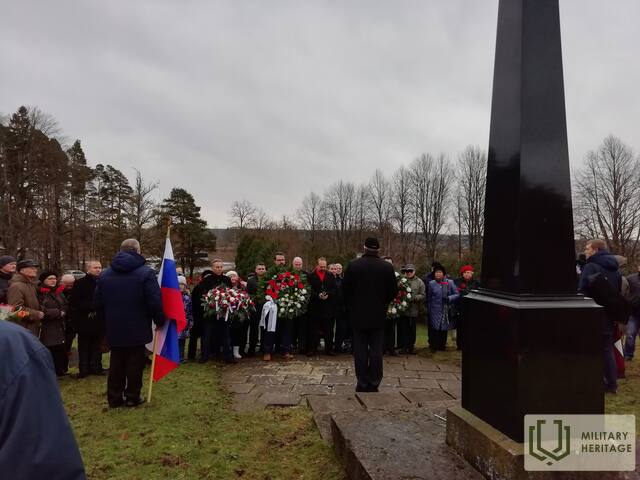Zlēku Tragedy Memorial Site Memorial site

 168
168




The memorial is located near the Zlēki Manor ensemble, in the western part of Karātavkalns. Around twenty boulders with the names of the people killed form a circle, and in the centre is a black marble obelisk about three metres high.
Some of those killed have been reburied at the Zlēki memorial.
In December 1944, in the vicinity of Zlēki, the German Nazi army carried out a large-scale operation against the civilian population.In the combat action log of Army Group Nord, an entry was made at 17.30 on 9 December 1944 that 161 people belonging to the "Rubens Brigade and units of the Red Arrow" had been killed on the enemy side during the action. In Soviet times, this figure was apparently taken as the total number of victims of the Zlēki tragedy, referring to civilians killed.
The course of the action is partly documented in the report of the head of the counter-intelligence section of the German 16th Army of 31 December 1944. It explains that from 5 to 9 December, under the leadership of the highest SS and police leader in Ostland, SS Oberruppenführer and Police General Friedrich Jekeln, a large-scale operation took place at Eichensumpf ("Oak Swamp") against the "Red Arrows" and the remnants of General Kurel's group at Abava.
Used sources and references:
Uldis Neiburgs' book "Sin and Hatred in Flames! Latvian Stories of the Second World War".
Related timeline
Related topics
Related stories
The place of the Zlēki tragedy in Latvian history is still unclear
During the Second World War, when most of Latvia was already controlled by the Soviet Union and Kurzeme was ruled by Hitler's German viceroys, the so-called Kurelians in Kurzeme started the struggle for the restoration of Latvia's state independence.




